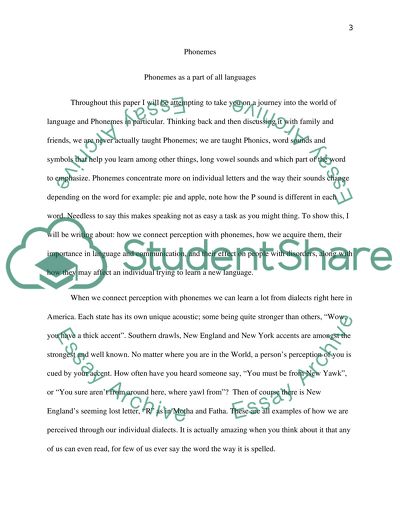Cite this document
(“Phonemes as a part of all languages Research Paper”, n.d.)
Retrieved de https://studentshare.org/psychology/1390542-phonemes
Retrieved de https://studentshare.org/psychology/1390542-phonemes
(Phonemes As a Part of All Languages Research Paper)
https://studentshare.org/psychology/1390542-phonemes.
https://studentshare.org/psychology/1390542-phonemes.
“Phonemes As a Part of All Languages Research Paper”, n.d. https://studentshare.org/psychology/1390542-phonemes.


